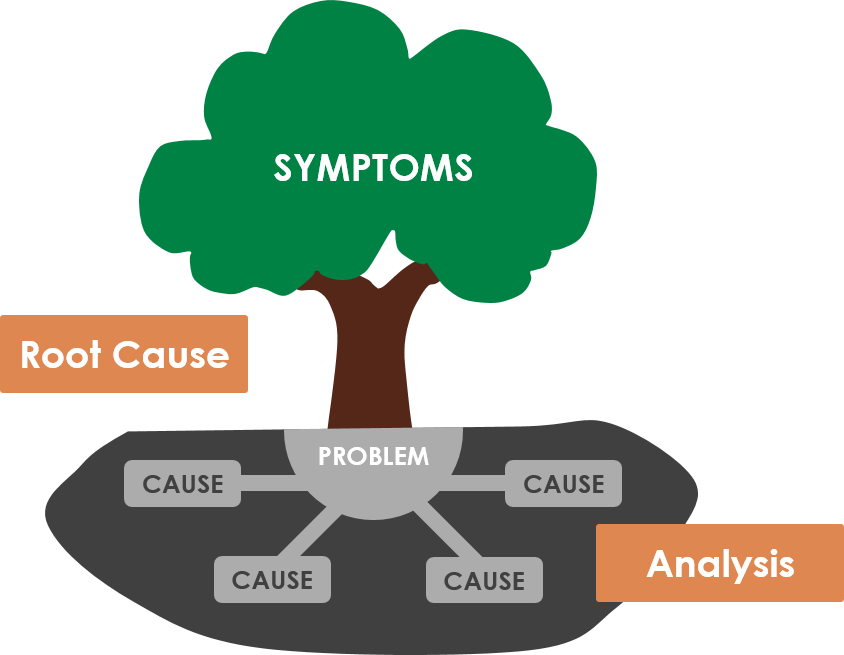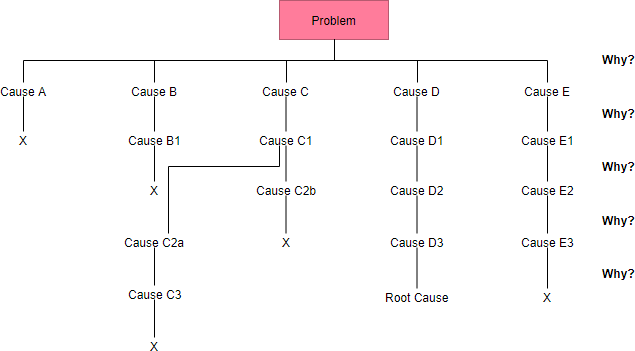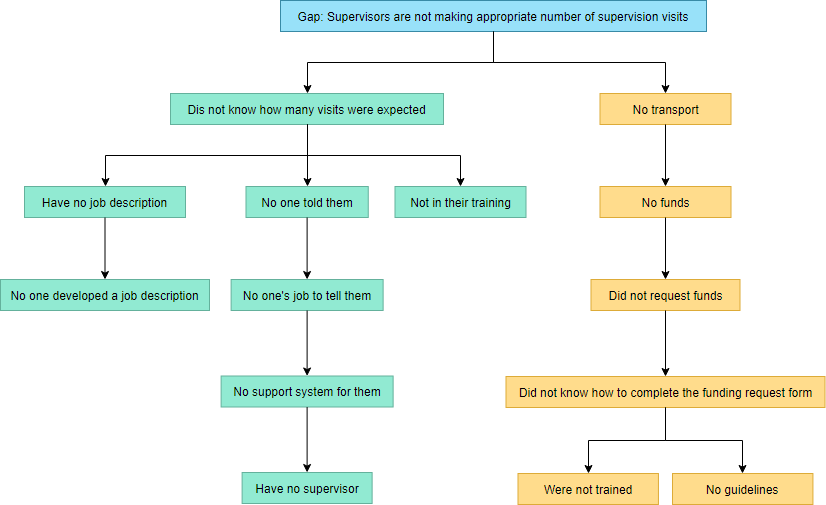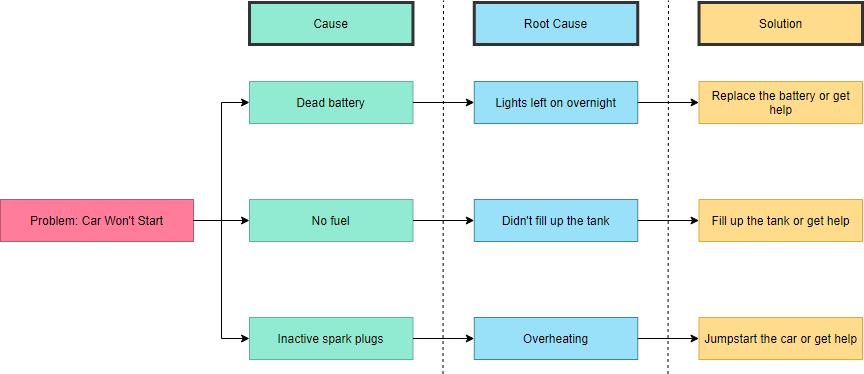When there are issues such as unsatisfied customers, decreasing market share, poor quality, etc. you have to understand the root cause of the issue. Only by addressing the root cause can a problem be fixed. Root Cause Analysis (RCA) is a method of problem-solving used for identifying the root causes of faults or problems. It is widely used in a wide variety of industries.
All trees have a trunk, branches, and leaves. These are parts that immediately spring to mind since they are the ones we can see. The part we don’t see is the root system that anchors the tree to the ground. This root system often occupies a far larger area than the tree itself. It also continues to grow even if the tree’s branches have had a hard pruning. That’s why the system of drilling down to get to the heart of an issue is called Root Cause Analysis.

Root cause analysis is an important step to enable companies to make the right changes to prevent faults from happening over and over again. There are three ways of dealing with recurrent problems. We can:
If we take the first option, the problem will never be solved and could escalate. If we take option two, it is the equivalent of painting over a stain or sticking a piece of tape over a leak and hoping it will hold – you’re treating the symptoms, but not the cause.
Taking the third option, i.e. analyzing the root cause, is the most time consuming, but should allow you to take steps to ensure that the problem never occurs in the future.
Here are some easy steps to effectively perform a 5 WHY analysis:
Not like a single 5 whys analysis hand one cause at a time, the tree diagram can be used to narrow down and eliminate possible causes in a diagram, ideally to one or more addressable root causes to be considered at one single diagram.

The Five Whys exercise is a questioning technique for going beyond symptoms of problems to identify the underlying or root causes of a problem. To facilitate the Five Whys Tree process, follow these steps:

For example: If your problem is that your car won’t start, the cause could be that it has no fuel. The root cause of this could then be that you forgot to fill up the tank, and the corrective action is, of course, to find some fuel.
Root Cause Analysis (RCA) can be decomposed into 4 steps:
RCA generally serves as input to a remediation process whereby corrective actions are taken to prevent the problem from reoccurring. The name of this process varies from one application domain to another.
